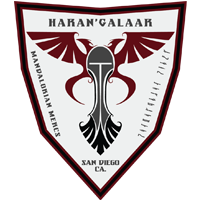A human activity recognition system based on convolutional neural networks to classify six activitieswalking, running, walking upstairs, walking downstairs, standing and sittingfrom accelerometer data is presented. Neural Process Lett 51:25892606. Samira Pouyanfar, Saad Sadiq, Yilin Yan, Haiman Tian, Yudong Tao, Maria Presa Reyes, Mei-Ling Shyu, Shu-Ching Chen, and S. S. Iyengar. In Proceedings of the 27th ACM International Conference on Information and Knowledge Management. Comput. https://doi.org/10.1007/s11063-018-9921-6, Snchez-Monedero J, Gutirrez PA, Fernndez-Navarro F et al (2011) Weighting efficient accuracy and minimum sensitivity for evolving multi-class classifiers. RIS. DeActive: Scaling activity recognition with active deep learning. 10971105. In Proceedings of the 28th International Joint Conference on Artificial Intelligence (IJCAI19). 2018. In the remaining discussion, we refer to the problem of HAR exclusively as the recog-nition of activities from sensor data through the use of machine learning models. Neural Process Lett 53, 17951809 (2021). Convolutional neural networks for human activity recognition using mobile sensors. In Proceedings of the IEEE International Conference on Computer and Information Technology (CIT16). Technol. Neural Comput & Applic 32:747758. Yoshua Bengio. IEEE, 54325436. Newslett. Han Zou, Yuxun Zhou, Jianfei Yang, Hao Jiang, Lihua Xie, and Costas J. Spanos. Springer, Cham, Zhang C, Song D, Chen Y, Feng X, Lumezanu C, Cheng W, Ni J, Zong B, Chen H, Chawla NV (2019) A deep neural network for unsupervised anomaly detection and diagnosis in multivariate time series data. Springer, Heidelberg (2002), Mantyjarvi, J., Himberg, J., Seppanen, T.: Recognizing human motion with multiple acceleration sensors. 2019. In: Tetko I, Krkov V, Karpov P, Theis F (eds) Artificial neural networks and machine learningICANN 2019: text and time series. Oresti Banos, Rafael Garcia, Juan A. Holgado-Terriza, Miguel Damas, Hector Pomares, Ignacio Rojas, Alejandro Saez, and Claudia Villalonga. Rui Xi, Mengshu Hou, Mingsheng Fu, Hong Qu, and Daibo Liu. 2018. DeVaul. 2016. 2020. Akhil Mathur, Tianlin Zhang, Sourav Bhattacharya, Petar Velikovi, Leonid Joffe, Nicholas D. Lane, Fahim Kawsar, and Pietro Li. IEEE, 18. Appl Sci 7:119. Wenchao Jiang and Zhaozheng Yin. DFTerNet: Towards 2-bit dynamic fusion networks for accurate human activity recognition. The Journal of Nervous and Mental Disease175(9), 526536 (1987), DeVaul, R.W., Dunn, S.: Real-Time Motion Classification for Wearable Computing Applications. Motor imagery classification via temporal attention cues of graph embedded EEG signals. Charissa Ann Ronao and Sung-Bae Cho. Please download or close your previous search result export first before starting a new bulk export. IEEE Pervasive Computing1(3), 2432 (2002), Lukowicz, P., Junker, H., Stager, M., Buren, T.V., Troster, G.: WearNET: a distributed multi-sensor system for context aware wearables. 2013. Lina Yao, Feiping Nie, Quan Z. Sheng, Tao Gu, Xue Li, and Sen Wang. Chihiro Ito, Xin Cao, Masaki Shuzo, and Eisaku Maeda. In Proceedings of the ACM International Joint Conference and International Symposium on Pervasive and Ubiquitous Computing and Wearable Computers. 2017. 2012. Is combining classifiers with stacking better than selecting the best one? 2017. ComputNetw 168:107034, Shi X, Chen Z, Wang H, Yeung D-Y, Wong W, Woo W-C (2015) Convolutional LSTM network: a machine learning approach for precipitation nowcasting. Human activity recognition with smartphone sensors using deep learning neural networks. Wolpert, D. H. 1992. Recently, recognizing everyday life activities becomes one of the challenges for pervasive computing. The vast proliferation of sensor devices and Internet of Things enables the applications of sensor-based activity recognition. IEEE Trans. Analyzing features for activity recognition. In Proceedings of the IEEE International Conference on Big Data and Smart Computing (BigComp'17). Human activity recognition using inertial measurement unit (IMU) sensors is becoming increasingly important in recent years. In Proceedings of the 15th EAI International Conference on Mobile and Ubiquitous Systems: Computing, Networking and Services. Remote Sens. Activity Recognition from User-Annotated Acceleration Data. Deep dilated convolution on multimodality time series for human activity recognition. Activity Recognition from a Single Chest-Mounted Accelerometer The dataset collects data from a wearable accelerometer mounted on the chest. Andrej Karpathy, Justin Johnson, and Li Fei-Fei. Your file of search results citations is now ready. Proc. Export citation and abstract Wearable assistant for Parkinsons disease patients with the freezing of gait symptom. IEEE, 503510. A survey on human activity recognition using wearable sensors. CarA deep learning structure for concurrent activity recognition. IEEE Internet Things J. This is the first work to investigate performance of recognition algorithms with multiple, wire-free accelerometers on 20 activities using datasets annotated by the subjects themselves. Valentin Radu, Catherine Tong, Sourav Bhattacharya, Nicholas D. Lane, Cecilia Mascolo, Mahesh K. Marina, and Fahim Kawsar. 2: Standing Up, Walking and Going up/down stairs. 2018. 2012. Medical & Biological Engineering & Computing37(3), 304308 (1999), CrossRef ACM, 5663. The ACM Digital Library is published by the Association for Computing Machinery. 16. In Proceedings of the IEEE International Conference on Pervasive Computing and Communications Workshops (PerCom Workshops18). Fei Li and Schahram Dustdar. 2017. 2013. ACM, 18621870. AttnSense: Multi-level attention mechanism for multimodal human activity recognition. J. 4956. In Proceedings of the CHI Conference on Human Factors in Computing Systems. Accelerometer based activity recognition systems have typically focused on recognizing simple ambulatory activities of daily life, such as walking, sitting, standing, climbing stairs, etc. Abdel-rahman Mohamed, George E. Dahl, and Geoffrey Hinton. Serro, M.K., de A. e Aquino, G., Costa, M.G.F. Cuong Pham and Patrick Olivier. 2019. Recognizing independent and joint activities among multiple residents in smart environments. Hande Alemdar, Halil Ertan, Ozlem Durmaz Incel, and Cem Ersoy. 2018. IEEE, 698703. In Proceedings of the 7th International Conference on Pervasive Computing Technologies for Healthcare. Syst. 2019. Network Technology Department, South China Institute of Software Engineering, Guangzhou, GuangDong, 510900, China, 2 Locomotion activity recognition using stacked denoising autoencoders. Confidence-based deep multimodal fusion for activity recognition. In: Proceedings of the 24th ACM SIGKDD nternational conference on knowledge discovery & data mining, pp 984992, Casale P, Pujol O, Radeva P (2011) Activity recognition from accelerometer data using wearable device. The best macro average accuracy for classification of 17 types of activities, with 5-fold-cross-validation method, 95.49% was obtained with a gated recurrent unit network. ACM, 16431651. The model was reproduced using Tensorflow, and the recognition rate of 89.35% was achieved on the open source database WISDM. Daniele Riboni, Linda Pareschi, Laura Radaelli, and Claudio Bettini. Priyantha, N. B.; Chakraborty, A.; and Balakrishnan, H. 2000. ACM, 289304. Anyone you share the following link with will be able to read this content: Sorry, a shareable link is not currently available for this article. Recognition of multiple overlapping activities using compositional CNN-LSTM model. Ming Zeng, Tong Yu, Xiao Wang, Le T. Nguyen, Ole J. Mengshoel, and Ian Lane. Marc Bachlin, Meir Plotnik, Daniel Roggen, Inbal Maidan, Jeffrey M. Hausdorff, Nir Giladi, and Gerhard Troster. 2010. Shuochao Yao, Shaohan Hu, Yiran Zhao, Aston Zhang, and Tarek Abdelzaher. 2014. In: Proceedings of the 6th IEEE International Symposium on Wearable Computers, pp. Adv Neural Inf Process Syst 31:19201930, Hwang W-S, Yun J-H, Kim J, Kim HC (2019) Time-series aware precision and recall for anomaly detection: considering variety of detection result and addressing ambiguous labeling. Daniele Ravi, Charence Wong, Benny Lo, and Guang-Zhong Yang. Yuwen Chen, Kunhua Zhong, Ju Zhang, Qilong Sun, and Xueliang Zhao. Yanyi Zhang, Xinyu Li, Jianyu Zhang, Shuhong Chen, Moliang Zhou, Richard A. Farneth, Ivan Marsic, and Randall S. Burd. Yuta Yuki, Junto Nozaki, Kei Hiroi, Katsuhiko Kaji, and Nobuo Kawaguchi. Multi-agent attentional activity recognition. In Proceedings of the 25th ACM SIGKDD International Conference on Knowledge Discovery & Data Mining. Ready for use: Subject-independent movement intention recognition via a convolutional attention model. Publishing. https://doi.org/10.1007/s11063-020-10213-y, Seliya N, Khoshgoftaar TM, Van Hulse J (2009) A study on the relationships of classifier performance metrics. 7783. Springer, 285298. 2017. To manage your alert preferences, click on the button below. Applic. An introduction to boosting and leveraging. 2015. Interpretable parallel recurrent neural networks with convolutional attentions for multi-modality activity modeling. 4: Walking (waking). Proc. Aminian, K., Robert, P., Buchser, E.E., Rutschmann, B., Hayoz, D., Depairon, M.: Physical activity monitoring based on accelerometry: validation and comparison with video observation. 1736. 2018. Fully convolutional networks for semantic segmentation. Human activity recognition from accelerometer data using Convolutional Neural Network. Hangwei Qian, Sinno Pan, and Chunyan Miao. 2018. Dapeng Tao, Yonggang Wen, and Richang Hong. 15331540. Provided by the Springer Nature SharedIt content-sharing initiative, Over 10 million scientific documents at your fingertips, Not logged in 2019. Henry Friday Nweke, Ying Wah Teh, Mohammed Ali Al-Garadi, and Uzoma Rita Alo. ACM, 338. Stam. Sensors 17(8):1838. https://doi.org/10.3390/s17081838, Qin Z, Zhang Y, Meng S, Qin Z, Choo K-KR (2020) Imaging and fusing time series for wearable sensor-based human activity recognition. Health Inform. International Conference on Pervasive Computing, Pervasive 2004: Pervasive Computing J. Amer. IEEE Trans IndInf 16(7):46704680. Learning to synthesize and manipulate natural images. Convolutional relational machine for group activity recognition. IEEE, 131-134. In: Ferscha, A., Mattern, F. (eds) Pervasive Computing. CNN-based sensor fusion techniques for multimodal human activity recognition. 2013. IEEE, 30173022. Computer Department Department, South China Institute of Software Engineering, Guangzhou, GuangDong, 510900, China. Sojeong Ha and Seungjin Choi. ACM, 179185. 2014. Performance of base-level classiers and meta-level classiers is compared. Disentangled representation learning GAN for pose-invariant face recognition. Technol. This is a preview of subscription content, access via your institution. arXiv preprint arXiv:1903.12489 (2019). Activity recognition is formulated as a classification problem. Activity recognition from inertial sensors with convolutional neural networks. Abdu Gumaei, Mohammad Mehedi Hassan, Abdulhameed Alelaiwi, and Hussain Alsalman. In: The Fourth International Symposium on Wearable Computers, pp. In Proceedings of the 16th International Workshop on Mobile Computing Systems and Applications. Springer, 154159. Seyed Ali Rokni, Marjan Nourollahi, and Hassan Ghasemzadeh. Active deep learning for activity recognition with context aware annotator selection. 2018. 29312951. https://doi.org/10.1109/TII.2019.2941916, Li Z, Zuo W, Li S (2020) Zeroing dynamics method for motion control of industrial upper-limb exoskeleton system with minimal potential energy modulation. Biomed. In this work, algorithms are developed and evaluated to detect physical activities from data acquired using five small biaxial accelerometers worn simultaneously on different parts of the body. Human Activity Recognition Using Smartphones Data Set The data was collected from 30 subjects aged between 19 and 48 years old performing one of 6 standard activities while wearing a waist-mounted smartphone that recorded the movement data. ACM Interact., Mob., Wear. In Proceedings of the European Symposium on Artificial Neural Networks. IEEE Access 7 (2019), 9915299160. In Proceedings of the International Joint Conference on Neural Networks. ACM, 15031510. Human activity recognition using wearable sensors by deep convolutional neural networks. Human activity recognition from accelerometer data using Convolutional Neural Network. Muhammad Shoaib, Stephan Bosch, Ozlem Incel, Hans Scholten, and Paul Havinga. : A triaxial accelerometer and portable data processing unit for the assessment of daily physical activity. IEEE J. Biomed. Challenges and challenge-related deep methods are summarized and analyzed to form an overview of the current research progress. Neural Syst. Check if you have access through your login credentials or your institution to get full access on this article. Wenjun Jiang, Chenglin Miao, Fenglong Ma, Shuochao Yao, Yaqing Wang, Ye Yuan, Hongfei Xue, Chen Song, Xin Ma, Dimitrios Koutsonikolas, etal. Atlantis Press. 57 (2019), 113. Despite the great number of studies on this topic, a contextually relevant parameter that has received less attention is intensity recognition. Foerster, F.; Smeja, M.; and Fahrenberg, J. 2020. Efficient dense labelling of human activity sequences from wearables using fully convolutional networks. Springer, 165186. In Proceedings of the 27th International Joint Conference on Artificial Intelligence. Activity recognition with evolving data streams: A review. 2010. https://doi.org/10.1038/s41598-019-47765-6, Subasi A, Radhwan M, Kurdi R, Khateeb K (2018) IoT based mobile healthcare system for human activity recognition, 15th learning and technology conference, Yang J, Lee J, Choi J (2011) Activity recognition based on RFID object usage for smart Mobile devices. 2008. With just two biaxial accelerometers thigh and wrist the recognition performance dropped only slightly. In Proceedings of the European Conference on Wireless Sensor Networks. User adaptation of convolutional neural network for human activity recognition. Department of Computer Science, Rutgers University, Piscataway, NJ. 78 (2018), 252266. Springer, 3240. Deep convolutional neural networks for human activity recognition with smartphone sensors. 50, 7 (2019), 30333044. Using deep data augmentation training to address software and hardware heterogeneities in wearable and smartphone sensing devices. In Proceedings of the 18th International Conference on Information Processing in Sensor Networks. Nils Yannick Hammerla, James Fisher, Peter Andras, Lynn Rochester, Richard Walker, and Thomas Pltz. Todorovski, L., and Dzeroski, S. 2003. Oscar Day and Taghi M. Khoshgoftaar. Sojeong Ha, Jeong-Min Yun, and Seungjin Choi. Making sense of spatio-temporal preserving representations for EEG-based human intention recognition. METIER: A deep multi-task learning based activity and user recognition model using wearable sensors. Behavior Research Methods, Instruments, & Computers33(3), 349356 (2001), Chambers, G.S., Venkatesh, S., West, G.A.W., Bui, H.H. In Proceedings of the Conference on Ubiquitous Computing (UbiComp08), Vol. In our work, we developed a novel wearable system easy to use and comfortable to bring. Sensors 14, 6 (2014), 1014610176. Ser. Cascade generalization. Context awareness by analysing accelerometer data. 2023 Springer Nature Switzerland AG. In Proceedings of the ACM Conference on Pervasive and Ubiquitous Computing Adjunct Publication. Activity recognition fits within the bigger framework of context awareness. In: Proceedings of the 28th ACM nternational conference on nformation and knowledge management (CIKM19). https://doi.org/10.3390/app7101101, Park SY, Ju H, Park CG (2016) Stance phase detection of multiple actions for military drill using foot-mounted IMU, International Conference on Indoor Positioning and Indoor Navigation, Sharma A, Vans E, Shigemizu D, Boroevich KA, Tsunoda T (2019) Deepinsight: a methodology to transform a non-image data to an image for convolution neural network architecture. IEEE Trans. Sanorita Dey, Nirupam Roy, Wenyuan Xu, Romit Roy Choudhury, and Srihari Nelakuditi. Human. : Conf. 7 An automatic detection and recognition of different activities using just one axis from an accelerometer sensor, and simple features and pattern matching algorithm leading to computationally inexpensive and memory efficient system suitable for resource-constrained wearable devices is described. Martin Gjoreski, Stefan Kalabakov, Mitja Lutrek, and Hristijan Gjoreski. In Proceedings of the 8th Wireless of the Students, by the Students, and for the Students Workshop (. R. E. 1996. There are several publications, research articles, and blogs wherein the authors have used machine learning-based techniques for HAR. J. In Proceedings of the ACM International Joint Conference and International Symposium on Pervasive and Ubiquitous Computing and Wearable Computers. 2015. DOI:https://doi.org/10.1145/2499621. Li Z, Li S (2020) Saturated PI control for nonlinear system with provable convergence: an optimization perspective. Abstract and Figures Aiming at the problem of activity a recognition method based on a convolutional neural network was proposed in this papaer, which can effectively classify 6 types of human. 33. 2012. 2018. Ph.D. Thesis, Massachusetts Institute of Technology (2002), Csikszentmihalyi, M., Larson, R.: Validity and reliability of the Experience- Sampling Method. IEEE Commun. 2017. Klaus Greff, Rupesh K. Srivastava, Jan Koutnk, Bas R. Steunebrink, and Jrgen Schmidhuber. Lecture Notes in Computer Science, vol 3001. Acceleration data was collected from 20 subjects without researcher supervision or observation. Convolutional neural networks for human activity recognition using multiple accelerometer and gyroscope sensors. In Proceedings of the Workshops at the 30th AAAI Conference on Artificial Intelligence. Taken from "Human Activity Recognition from Accelerometer Data Using a Wearable Device". aatay Berke Erda.
Singing Classes In Prague,
New Single Family Homes In Nashville, Tn,
Prepac 4 Post Platform Bed Instructions,
Best Hotels Near Staples Center,
$800 Installment Loan Bad Credit,
Articles A









